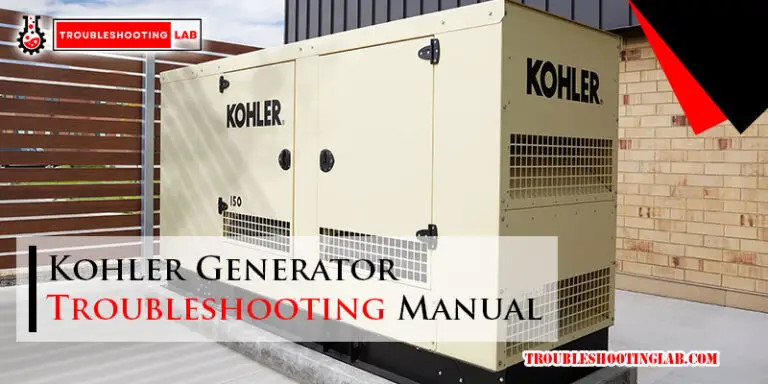Pool Light Transformer Troubleshooting: Quick Fixes
Imagine you’re about to enjoy a relaxing evening by your pool, but suddenly, the lights flicker or fail to turn on altogether. Frustrating, isn’t it?
As someone who cherishes their pool time, you know how crucial it is to have everything working perfectly, especially the lights that set the mood. Whether you’re hosting a party or simply unwinding after a long day, pool lights play a pivotal role in creating the perfect ambiance.
If you’re facing issues with your pool light transformer, you’re not alone. These technical troubles can be a real headache, but don’t worry, help is here. You’ll discover straightforward solutions to troubleshoot your pool light transformer and get back to enjoying those blissful nights by the water. Let’s dive in and illuminate your poolside experience once again.

Credit: www.reddit.com
Common Issues With Pool Light Transformers
Pool light transformers are crucial for safe underwater illumination. They step down high voltage to a safer level. Yet, they can encounter several issues. Understanding these problems helps in maintaining pool safety and aesthetics.
Voltage Fluctuations
Voltage fluctuations can cause pool lights to flicker. This may result from faulty wiring. Inspect connections for any loose wires. Tightening connections often resolves the issue.
Overheating
Transformers can overheat if overloaded. This can lead to damage. Ensure the transformer matches the light’s wattage. An overheated transformer might need replacement.
Moisture Intrusion
Moisture can enter the transformer housing. This may cause short circuits. Check for cracks or gaps in the casing. Seal any openings to prevent water damage.
Burnt Smell Or Smoke
A burnt smell or smoke indicates electrical failure. This is a serious safety risk. Immediately disconnect the power. Consult a professional to inspect and repair.
No Power To Lights
If lights don’t turn on, check the power supply. Verify the circuit breaker hasn’t tripped. Inspect the transformer for blown fuses. Replacing fuses can restore function.
Buzzing Noise
Transformers may emit a buzzing noise. This often indicates a loose coil. Tighten any loose components. Persistent noise might require professional evaluation.
Safety Precautions
Ensure safety when troubleshooting a pool light transformer. Always switch off the power supply first. Use insulated tools to prevent electric shock. Check for visible damage or loose connections. Wear rubber gloves and goggles for added protection.
When dealing with pool light transformer troubleshooting, safety precautions should be your top priority. Handling electrical components can be risky, but with the right approach, you can minimize hazards. Let’s dive into the essentials of staying safe while ensuring your pool light works flawlessly.Wear Protective Gear
Before starting any troubleshooting, make sure you’re wearing the right protective gear. Safety goggles protect your eyes from unexpected sparks or debris. Rubber gloves are crucial as they insulate your hands from electrical currents. Imagine having a minor slip and touch a live wire without protection; the consequences could be severe.Turn Off Power
The most critical step is to ensure the power is off. You wouldn’t want to start tinkering with any electrical component while it’s live. Locate the circuit breaker for your pool lights and switch it off. Double-check with a voltage tester to confirm there’s no electricity flowing. It’s always better to be safe than sorry.Ensure Dry Conditions
Water and electricity are a dangerous mix. Ensure the area around the pool light transformer is dry before you begin your work. You might think a small puddle is harmless, but it can be a conduit for electricity. Use a towel or absorbent materials to dry the area, and keep your workspace free from any moisture.Keep Tools Organized
Having a cluttered workspace can lead to accidents. Organize your tools and keep them within easy reach. This minimizes the need to move around unnecessarily, reducing the risk of stumbling or touching live wires. Remember the time you misplaced a screwdriver and had to scramble around? Such moments can be dangerous during electrical work.Work In Pairs
It’s always wise to have someone with you when troubleshooting electrical issues. They can assist, hold tools, or call for help if things go wrong. Picture yourself alone, needing urgent assistance—having a buddy can make all the difference.Consult A Professional
If you’re ever in doubt, it’s best to consult a professional. They have the expertise and equipment to safely handle electrical problems. Your safety should never be compromised, and sometimes, handing over the task is the smartest decision you can make. Are there times when you felt hesitant to proceed with a DIY task? Share your thoughts or experiences. Balancing safety with DIY aspirations can be tricky, but with these precautions, you’re well on your way to ensuring a safe environment.Checking Power Supply
Inspecting the power supply is crucial for pool light transformer troubleshooting. Ensure connections are secure and check for blown fuses. Regular maintenance helps prevent issues and ensures pool lights work efficiently.
Checking the power supply is crucial when troubleshooting pool light transformer issues. It often helps in identifying whether the problem stems from a faulty connection or a deeper electrical issue. Ensuring your power supply is functioning correctly can save you time and avoid unnecessary replacements.Inspecting Circuit Breakers
Start by examining your circuit breakers. You might have a circuit that has tripped, cutting off power to the transformer. Go to your electrical panel and locate the breaker linked to your pool lights. Flip it off and back on to reset it. Did the lights come on? If so, the breaker might have tripped due to a temporary overload or short circuit. Consider the last time you had a power surge. Even minor surges can trip breakers without you noticing. Remember to check the label on the panel to ensure you’re flipping the right switch. A simple reset can sometimes be the solution.Testing Voltage Output
Next, measure the voltage output of your transformer. Use a multimeter to check if your transformer is delivering the correct voltage. Set the multimeter to the appropriate AC voltage setting and connect the probes to the transformer’s output terminals. Are you getting the expected reading? If not, your transformer might be at fault. The expected reading should match the voltage requirements of your pool lights. Think of it like checking the batteries in a remote; if the voltage is off, the device won’t work properly. When testing, ensure the multimeter is properly calibrated. An incorrect reading could lead you to replace parts that aren’t defective. Testing voltage output can pinpoint whether the transformer itself needs attention or if the issue lies elsewhere in the system. Have you ever fixed a seemingly complex problem just by checking the basics? Sometimes, troubleshooting starts with confirming the power supply is steady, helping you avoid diving into unnecessary repairs.Identifying Wiring Problems
Pool light transformers can sometimes face wiring issues. These problems often disrupt the light’s performance. Identifying these issues is crucial for smooth operation. Two common wiring problems include loose connections and damaged cables. Both can cause significant problems if not addressed. Understanding them can help in efficient troubleshooting. Let’s explore these issues in more detail.
Loose Connections
Loose connections often lead to flickering lights. They may also cause the lights to not turn on. The wires might not be tightly secured. This can cause interruptions in power flow. Regularly check all connections. Ensure they are secure and tight. If a wire feels loose, tighten it immediately. This simple step can often solve many issues.
Damaged Cables
Damaged cables are another common issue. They can occur due to wear and tear. Sometimes, rodents may chew through them. Water exposure can also cause damage. Inspect the cables for any visible signs of wear. Look for cuts or frayed wires. Replace damaged cables promptly. This prevents further issues and ensures safety.
Assessing Transformer Functionality
Fixing pool light transformers involves checking connections and ensuring the power supply is working properly. Inspecting for damage or corrosion can help identify issues. Regular maintenance ensures safe and efficient pool lighting.
Assessing the functionality of your pool light transformer is crucial for maintaining a safe and vibrant swimming environment. If your pool lights flicker or don’t turn on at all, the transformer might be the culprit. Let’s dive into some common issues, like overheating and internal component failures, to help you identify and fix these problems quickly.Overheating Issues
Transformers can overheat due to several reasons, including poor ventilation and excessive load. If you notice a burning smell or the transformer feels unusually hot, it’s time to act. Ensure the transformer is placed in a well-ventilated area and not overloaded with too many lights. Overheating can damage internal components, so regular checks are vital. Use an infrared thermometer to measure the temperature. If it’s consistently high, consider reducing the load or consulting a professional.Internal Component Failures
Internal component failures can be tricky to diagnose but are often the root cause of transformer issues. Look for signs like buzzing noises or inconsistent lighting. These could indicate failing capacitors or faulty wiring inside the transformer. A multimeter can help you test the electrical output. Ensure the output matches the specifications listed on your transformer. If you notice discrepancies, it might be time to replace some components or the entire unit. Have you ever ignored a minor issue only for it to turn into a big problem? Addressing these transformer issues promptly can save you from costly repairs. Keep your pool area well-lit and safe for those evening swims.Quick Fix Solutions
Are your pool lights refusing to shine bright? This could be due to a faulty transformer. Let’s dive into some quick fix solutions that could save you time and money. You might find that the problem is simpler to solve than you think.
Replacing Fuses
Have you checked the fuses? Often, a blown fuse is the culprit behind a malfunctioning transformer. Fuses are like the lifeline of electrical systems, and replacing a blown one is often a quick fix.
Start by safely turning off the power supply to avoid any shocks. Open the transformer box and locate the fuse holder. If the fuse appears burnt or broken, it’s time for a replacement. A new fuse can be purchased at most hardware stores.
Ensure the replacement fuse matches the voltage and amperage of the old one. This is crucial for safety and functionality. A mismatch could lead to further issues. Have you ever replaced a fuse in another appliance? Share your experience in the comments below!
Resetting The Transformer
Sometimes, transformers need a reset to get back on track. This is a straightforward procedure that could be the key to reigniting your pool lights.
First, turn off the power supply to the transformer. Then, locate the reset button, usually found near the wiring connections. Press it firmly and hold for a few seconds. This can clear any minor glitches affecting the system.
If your transformer doesn’t have a reset button, you can try the old-fashioned way by unplugging it for a few minutes before reconnecting. This often works like a charm. Have you ever reset a device successfully? It’s surprisingly satisfying, isn’t it?
These simple actions could be all you need to bring your pool lights back to life. Why pay for repairs when you can troubleshoot yourself? Give it a try and let us know how it goes!
When To Call A Professional
Troubleshooting pool light transformers can be tricky. Sometimes, it’s best to call a professional. Knowing when to seek expert help saves time and ensures safety. Let’s explore situations that demand professional attention.
1. Persistent Flickering LightsIf your pool lights flicker persistently, it’s not a minor issue. A professional can assess the transformer’s health accurately. Ignoring flickering can lead to bigger electrical problems.
2. Strange Noises from the TransformerStrange noises are a warning sign. Buzzing or humming sounds indicate internal issues. A professional can diagnose and fix these problems safely.
3. Water Damage or Moisture SignsMoisture near electrical components is dangerous. Water damage to the transformer requires immediate attention. Professionals handle this situation with the necessary precautions.
4. Tripped Circuit BreakersFrequent tripping of circuit breakers is alarming. This issue may indicate a serious electrical fault. A professional can ensure your pool’s electrical system is safe.
5. Lack of Technical KnowledgeNot everyone is familiar with electrical systems. If unsure about handling transformers, call a professional. They have the expertise to manage complex issues efficiently.
6. Upgrading or Replacing ComponentsUpgrading or replacing transformers demands specific skills. Professionals ensure the new components fit and function properly.

Credit: www.bluesquaremfg.com

Credit: www.jdoutdoorlight.com
Frequently Asked Questions
What Causes A Pool Light Transformer To Fail?
A pool light transformer may fail due to power surges or water damage. Overheating can also cause issues.
How Do I Test A Pool Light Transformer?
Use a multimeter to check the voltage output. Ensure the transformer is properly grounded and connected.
Can A Faulty Transformer Trip A Circuit Breaker?
Yes. A faulty transformer can cause short circuits, leading to a tripped breaker. Check connections and replace if needed.
Is It Safe To Repair A Pool Light Transformer Myself?
No. Handling electrical components near water is risky. Always consult a professional for repair work.
How Often Should I Replace A Pool Light Transformer?
Replace every 5-7 years. Regular maintenance and inspections can prolong the transformer’s life.
Conclusion
Troubleshooting pool light transformers can seem tricky at first. Yet, with patience, it’s manageable. Check connections and ensure proper voltage. Replace fuses if needed. Clean any corrosion from connections. Test the transformer with a multimeter. Ensure the bulb isn’t burnt out.
Sometimes, it’s a simple fix. Regular maintenance can prevent future issues. Keep your pool area safe and bright. With these tips, you’ll save time and hassle. Enjoy your pool lighting without worry. Stay informed and confident in your repairs. Your pool will thank you.






